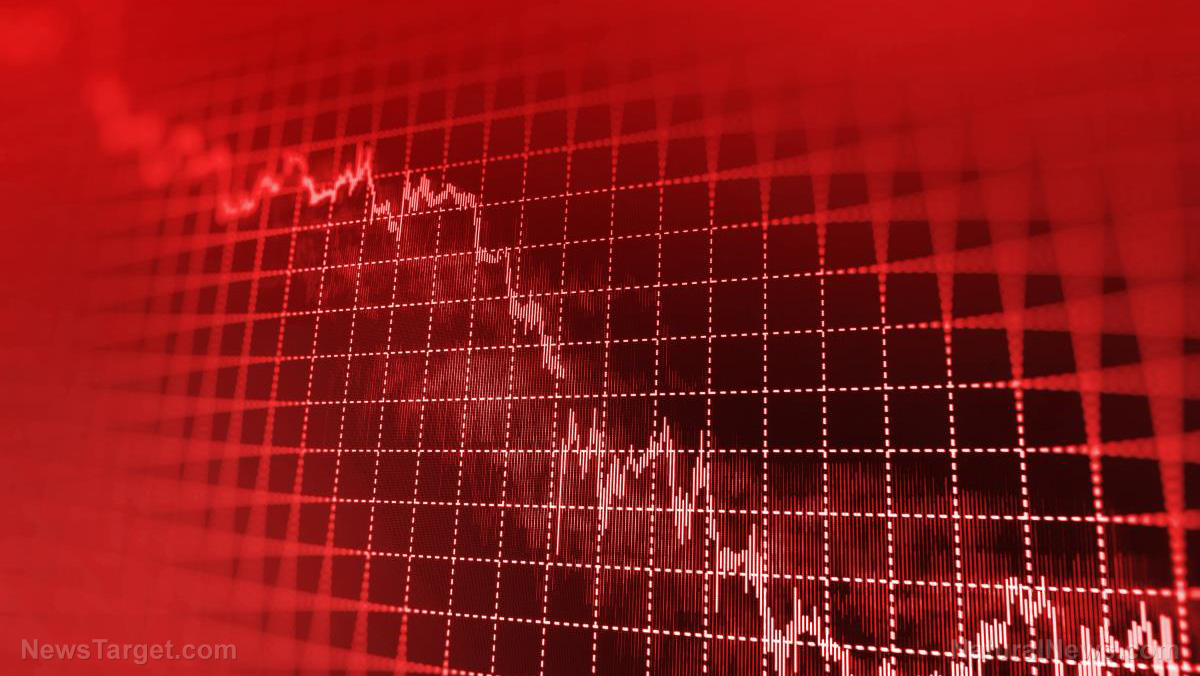High prices are here to stay as supply chain disruptions continue
11/17/2021 / By Mary Villareal

Economists, strategists and business executives are warning that the high inflation rates will likely continue into 2022 and beyond. Consumer prices have soared in October and are up 6.2 percent from the previous year, which is higher than most economists estimated.
However, the Federal Reserve insisted that it will be temporary, largely because the soaring prices are tied to the supply chain crisis that is affecting economies, businesses and consumers alike.
Inflation began to soar in early 2021 and has been above five percent up year-on-year since May, which is double the two percent pace that the Fed targeted. There are plenty of complex reasons why the prices are up, but one of the most important remains to be the dynamic of supply and demand.
Consumer demand soars in 2021
In the early days of the pandemic, consumer demand dropped as unemployment skyrocketed and people found themselves in lockdowns. It has soared in 2021, particularly for everyday goods and other products – most of which are ordered online.
E-commerce activities soared to levels never seen pre-pandemic. Demand for products has outstripped the market’s capacity to produce or ship what is ordered. Even daily commodities such as groceries, hardware products or ready-made food are all ordered through various online platforms.
Retailers like Macy’s, Target, Walmart and others had to make do with scarce inventories and higher freight costs. These trends created more demand than delivery carriers can accommodate and have stretched their ability to deliver products. Holiday shopping has been affected as retailers have to take care of more than 4.7 million packages beyond what their systems can possibly deliver.
With the ongoing truck driver and labor shortages, big retailers are offering generous benefits to attract and keep employees on hand. All these costs – from hiring, storage and delivery – are usually passed on to consumers, marking higher prices than ever.
While the demand for supplies is up, supply chains remain a mess and problems are only getting worse as bottlenecks pile up all across Asia, putting strains on the capacity of freights to deliver on time. Despite the millions of jobs available, the global shortage of drivers and workers is also making it difficult to expand capacity or fix other problems in the chain.
The dozens of container ships idling near the ports of Los Angeles, New York and elsewhere are also tying up large quantities of merchandise still waiting to be unloaded. There are not enough workers and drivers to unload the cargo.
Shoe brand Nike lost 10 weeks of its production because of lockdowns in Vietnam, where it produces its shoes. It is now taking an average of 80 days to get shoes from Asia to retailers in North America, which is twice as long as its pre-pandemic turnaround time. As a result, shoe prices are soaring.
Even single products are becoming harder to manufacture. For instance, Bullfrog Spa’s hot tub requires around 1,850 separate parts. Supply chain disruptions have pushed its manufacturing time from six weeks to six months. (Related: Supply chain crisis affecting holiday shopping despite early start.)
There is no near end to the supply chain problems, and consumer demand is only going to increase over the holiday season and beyond, which means that inflation is not going to go away any time soon.
Economists expect inflation to slow to 3.4 percent next summer and may hit 2.6 percent by the end of next year. While this is encouraging, it is still well above the pre-pandemic average of 1.7 percent and is outside the Fed’s target.
Get more updates about the inflation and what it means for the holiday season at Bubble.news.
Sources include:
Tagged Under: Bubble, chaos, Collapse, crisis, Digital Sales, grocery, holiday season, Inflation, labor shortage, online shopping, pandemic, products, shipping, supply chain
RECENT NEWS & ARTICLES
COPYRIGHT © 2017 BUBBLE NEWS


















